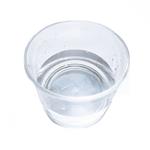Description
Vinyltrimethoxysilane, is used as a polymer modifier via grafting reactions. The resulting pendant trimethoxysilyl groups can function as moisture-activated crosslinking sites. The Silane grafted polymer is processed as a thermoplastic and crosslinking occurs after fabrication of the finished article upon exposure to moisture.
Vinyltrimethoxysilane is mainly applied in these aspects:
- In the preparation of moisture-curing polymers, e.g. polyethylene. Silane crosslinked polyethylene is widely used as cable isolation, and sheathing mainly in low voltage applications as well as for hot water/sanitary pipes and underfloor heating.
- As a co-monomer for the preparation of different polymers such as polyethylene or acrylics. Those polymers show an improved adhesion to inorganic surfaces and they can also be crosslinked with moisture.
- As an efficient adhesion promoter for various mineral-filled polymers, improving mechanical and electrical properties especially after exposure to moisture.
- Improving the compatibility of fillers with polymers, leading to a better dispersibility, reduced melt viscosity and easier processing of filled plastics.
- Pre-treating of glass, metals, or ceramic surfaces, improve the adhesion of coatings on these surfaces and corrosion resistance.
- As moisture scavenger, it reacts rapidly with water. This effect is used widely in sealants.
Chemical Properties
Colorless transparent liquid
Uses
VTMS may be used to provide superhydrophobicity to different materials like TiO
2, talc, kaolin, magnesium oxide nanoparticles, ammonium phosphate and PEDOT. It modifies the surface by capping the material and creates a protective layer that is water resistant and can be used in major coating industries.
General Description
Vinyltrimethoxysilane (VTMS) is a silane coupling agent with silicon and hydroxyl groups that can be used to enhance the wettability and improve the superhydrophobic characteristics of different composites.
Flammability and Explosibility
Flammable
Toxics Screening Level
The initial threshold screening level (ITSL) for vinyltrimethoxysilane is 10 μg/m3 based on an annual averaging time.







